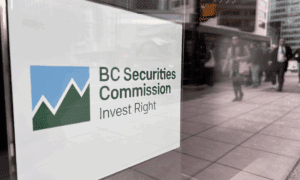Automated outreach helps businesses connect with customers quickly — through phone calls, text reminders, and voice broadcasts. But speed without proper consent can lead to serious penalties.
The Telephone Consumer Protection Act (TCPA) sets clear limits on how companies can contact people using auto-dialed calls or texts. This law applies to most forms of automated communication, including promotional messages and service notifications. Consent is required — and the rules are strict.
In this article, we’ll cover how to stay compliant, what common mistakes to avoid, and what tools can help reduce legal risk.
1. What Counts as Automated Outreach Under TCPA Rules
You don’t need a complex robocall setup to trigger TCPA rules. Many common outreach tools qualify. If you use a platform that can schedule texts, queue messages, auto-dial numbers, or send recorded voice messages — you’re likely using an automated system under the law.
This includes text marketing tools, voice broadcast systems, and CRM platforms with built-in outreach functions. Even if a human clicks “send,” the system may still be regulated if the messages are auto-generated or pre-loaded.
The safest approach is to treat any bulk communication tool that can initiate contact without individual manual input as subject to TCPA. Don’t assume “automated” only means voice calls — texts count too.
2. Reassigned Numbers Can Lead to Accidental Violations
Phone numbers change hands more often than many companies realize. If a customer gives you permission and then cancels their number, that number may soon belong to someone else. If your system keeps contacting that number, you’re now messaging or calling someone who never gave you consent.
That’s a TCPA violation — even if you thought you were contacting the right person.
One way to lower this risk is by checking against the Do not call registry and the FCC’s Reassigned Number Database (RND). These tools help you confirm whether the number still belongs to your original contact. The RND, in particular, lets you query whether a number has changed owners since your last successful communication.
Using the RND gives you access to “safe harbor” protections if you’re sued — as long as your data and queries are accurate.
3. Getting Consent the Right Way from the Start
Consent is the foundation of legal outreach. You can’t send someone a message or call just because they gave you their number. You need specific permission — and the level of consent depends on the message.
For promotional or marketing messages, express written consent is required. That can be a checkbox on a form, an e-signature, or a digital agreement that includes a clear disclosure. For service-related messages (like appointment reminders), regular consent is enough — but still needs to be documented.
Mistakes happen when companies use old lists, assume verbal agreements still apply, or rely on outdated opt-ins. Consent should always be current, verifiable, and connected to the message type. If you can’t prove you have it, don’t send the message.
4. Making Opt-Outs Easy and Compliant
Every automated message must include a clear way to stop future contact. This isn’t just a courtesy — it’s a legal requirement under the TCPA. For texts, that usually means allowing people to reply “STOP.” For calls, it means giving a clear opt-out in the message.
If someone opts out through one channel, you should honor that across all channels. If they unsubscribe from texts, don’t call them later. Applying opt-outs system-wide shows good faith and reduces your risk of accidental violations.
Ignoring or delaying opt-out requests is one of the fastest ways to draw regulatory attention. You should process these requests immediately and confirm them to the user.
5. The Reassigned Number Database: What You Should Know
The Reassigned Number Database launched in 2021 and now contains hundreds of millions of disconnected or reassigned numbers. When you submit a phone number and the date of last contact, the system checks whether that number has changed hands since then.
You can use the RND directly or through a registered agent like Interactive Marketing Solutions (IMS). Agents can batch-process millions of records, validate your data, and return results in minutes.
The RND doesn’t eliminate risk entirely, but it helps companies verify numbers before launching campaigns. Combined with solid consent records, it’s a powerful compliance tool.
6. Why CRM Data Alone Isn’t Enough
CRMs are built for speed, not always for accuracy. Most systems store contact data for long periods. If numbers aren’t validated regularly, you could be sending outreach to old or reassigned contacts.
Also, many CRMs don’t integrate opt-out data well across communication channels. Someone may unsubscribe from one campaign but continue to get messages from another system.
You should regularly clean your contact lists, connect your CRM to number validation tools, and ensure that any outreach system updates in real time. Data hygiene is essential to TCPA compliance.
7. Mistakes That Commonly Lead to Fines
Most TCPA violations come from oversight, not bad intent. Some of the most common errors include:
- Using outdated contact lists
- Failing to capture or verify consent
- Missing or broken opt-out instructions
- Sending outreach during restricted hours (before 8 a.m. or after 9 p.m. local time)
These are preventable issues. A regular review of your contact strategy, software tools, and consent practices can catch them before they become expensive.
8. Tools That Help You Stay Compliant
Several platforms now offer TCPA-focused compliance features. These include number validation, opt-out management, consent tracking, and API integrations with popular outreach systems.
Vendors like IMS, Twilio, and Validity provide services that help you check against the RND, maintain clean data, and prevent unauthorized contact. These tools are useful whether you’re a startup or an enterprise, and many scale affordably.
The key is to use tools that fit your workflow and integrate into your existing tech stack without slowing your team down.
9. If You Might Be Noncompliant, Act Now
If you’re unsure whether your outreach complies with the TCPA, pause your campaigns and review your setup. First, check how you collect and store consent. Then, verify that you’re handling opt-outs and reassigned numbers correctly.
Clean your list using the RND or work with a compliance provider. Remove any numbers you can’t verify. And if you’ve already sent questionable messages or calls, consider seeking legal advice. Many issues can be fixed if caught early.
Doing nothing is the biggest risk. Taking action shows responsibility — and regulators often take that into account.
The tools we use to connect with customers are faster and more powerful than ever. But with that power comes legal responsibility. The TCPA isn’t just about phone calls — it governs the full range of automated outreach, including text messages and voice drops.
By getting proper consent, cleaning your lists, and using tools like the Reassigned Number Database, you reduce your legal risk and protect your brand.
Smart outreach is more than just automation. It’s automation with accountability.



































